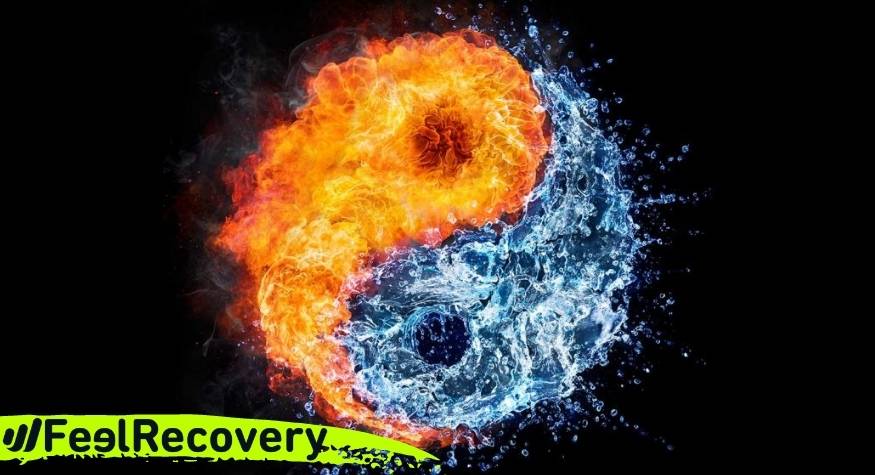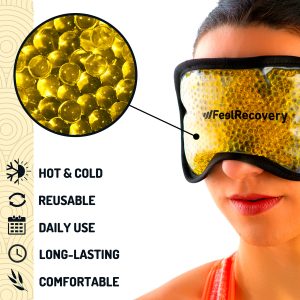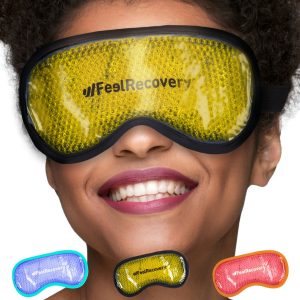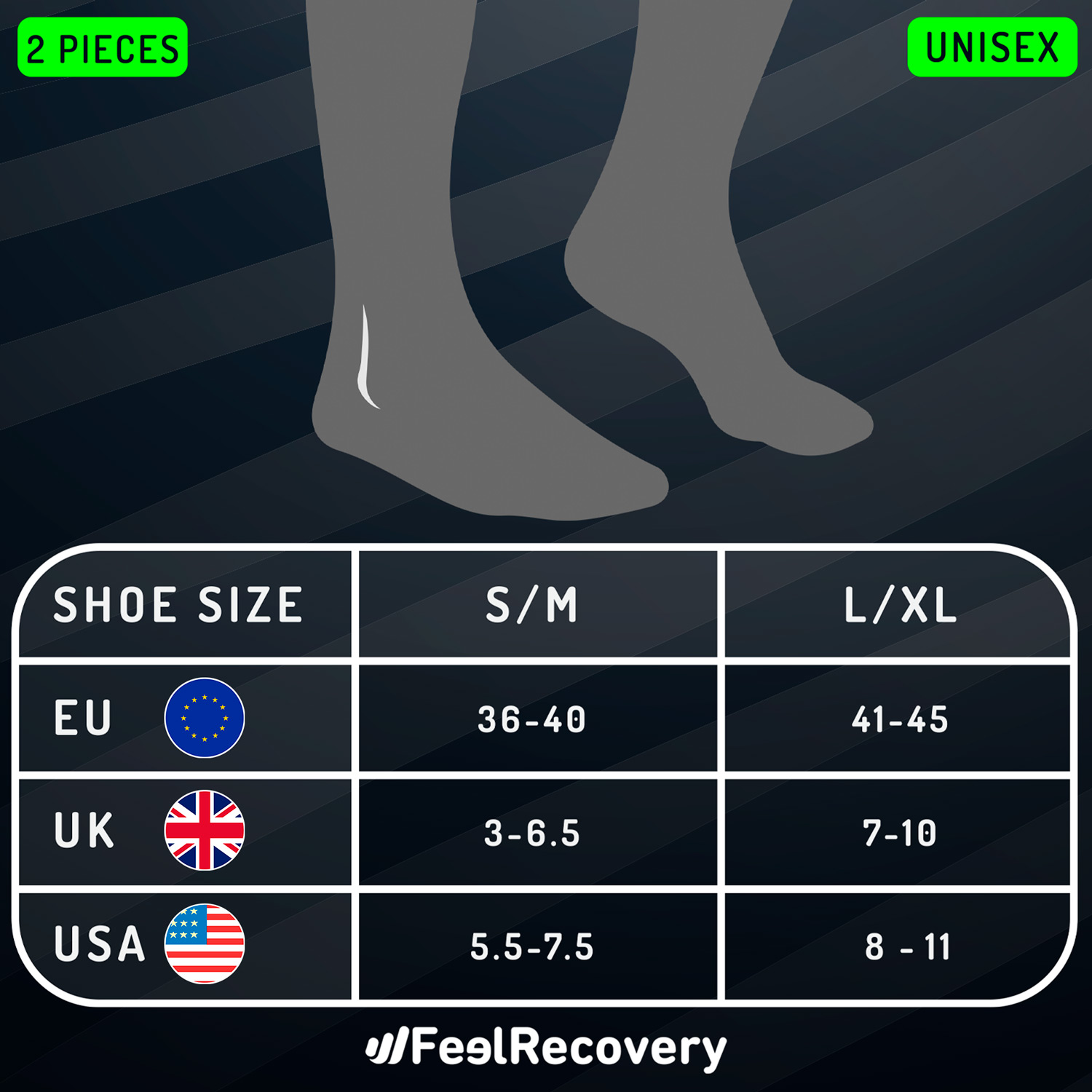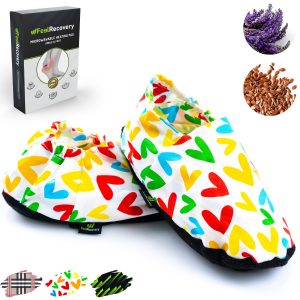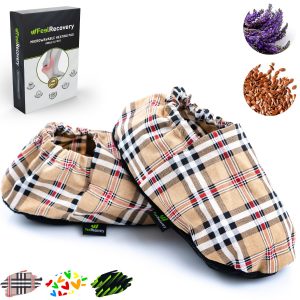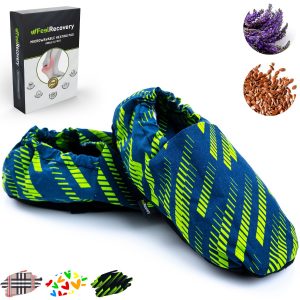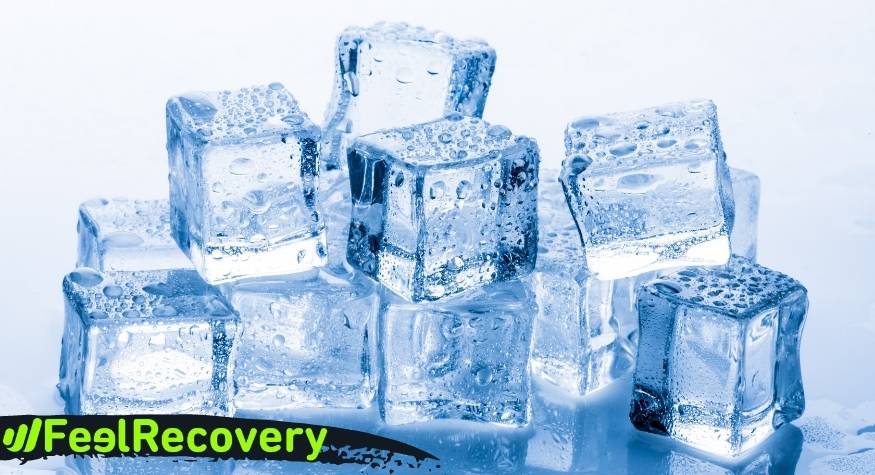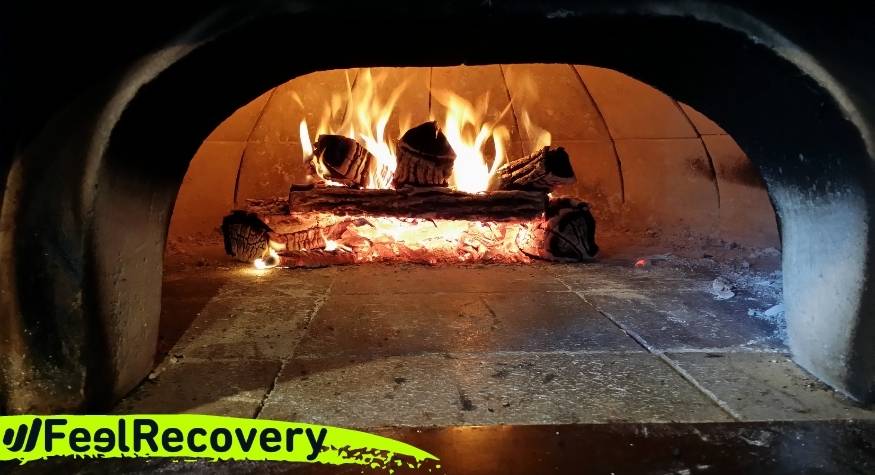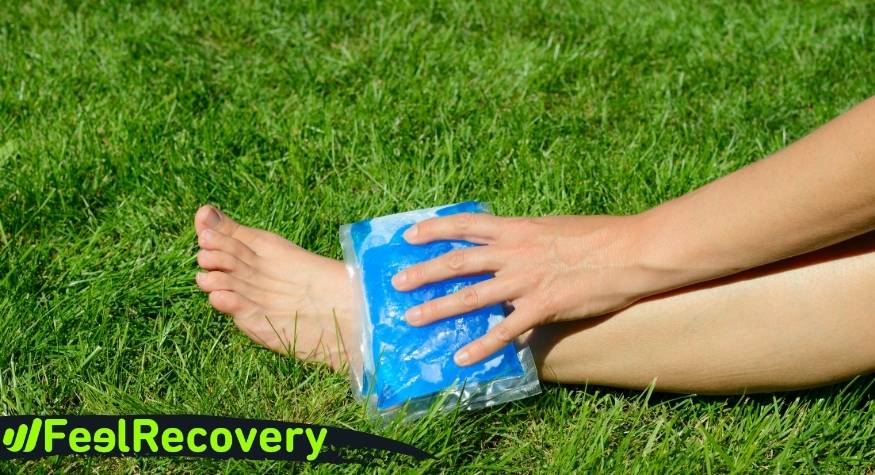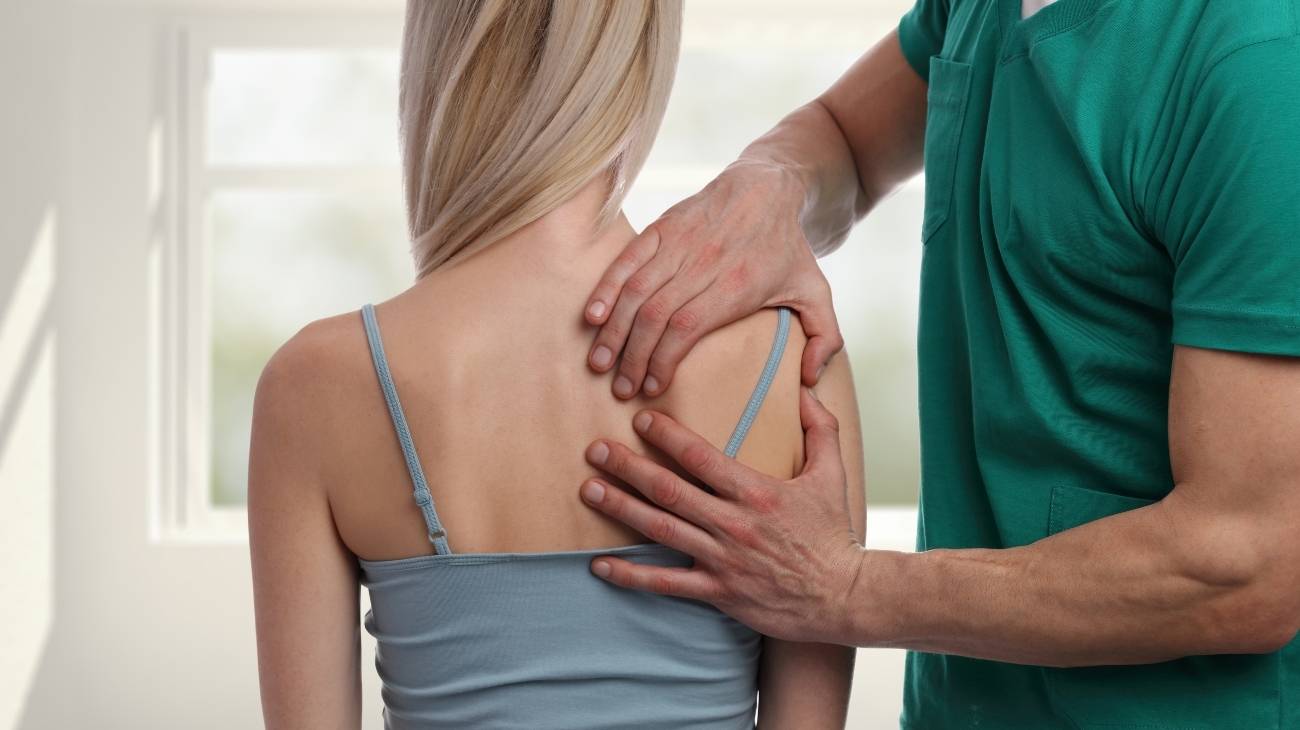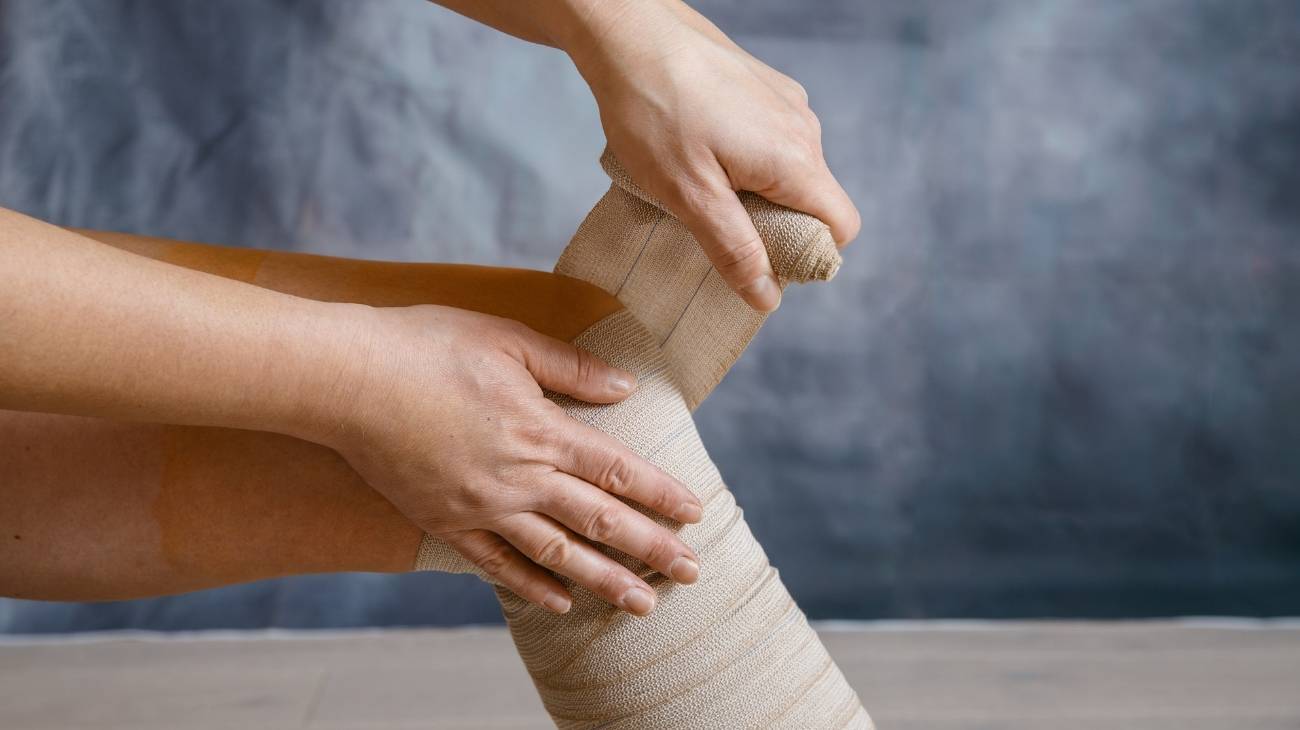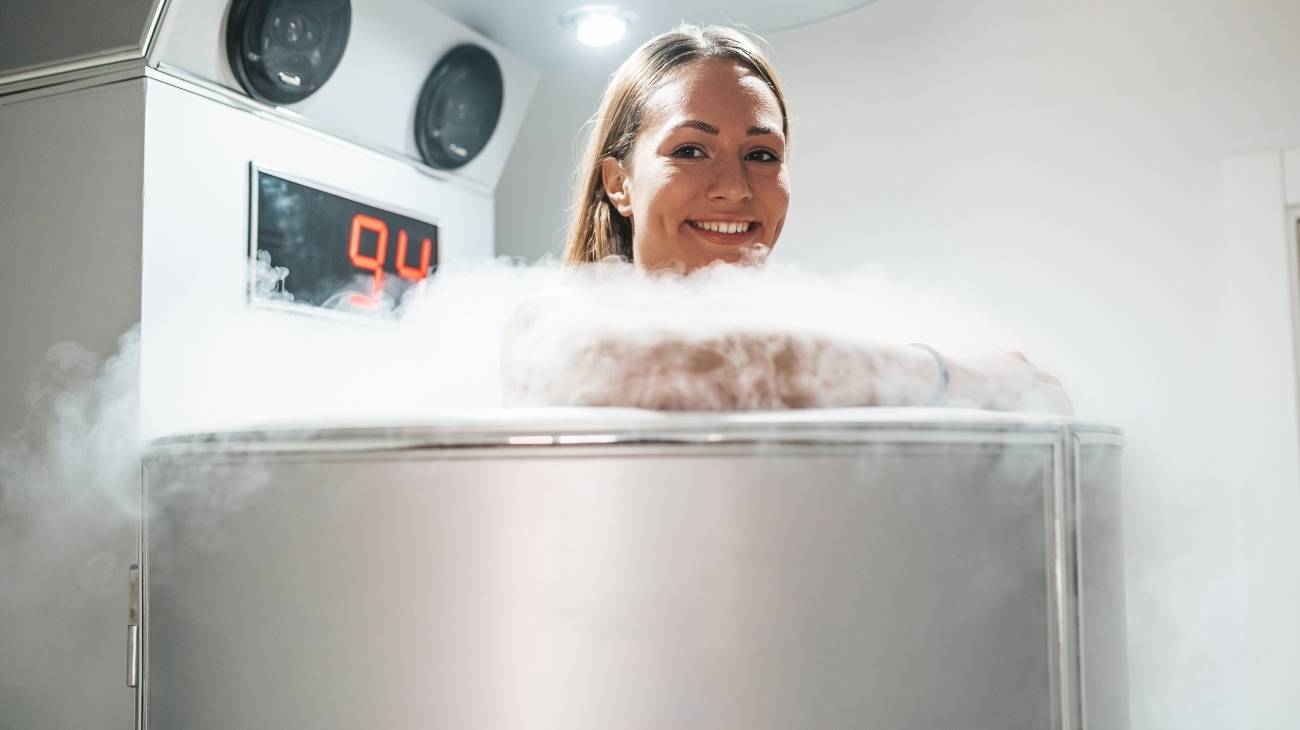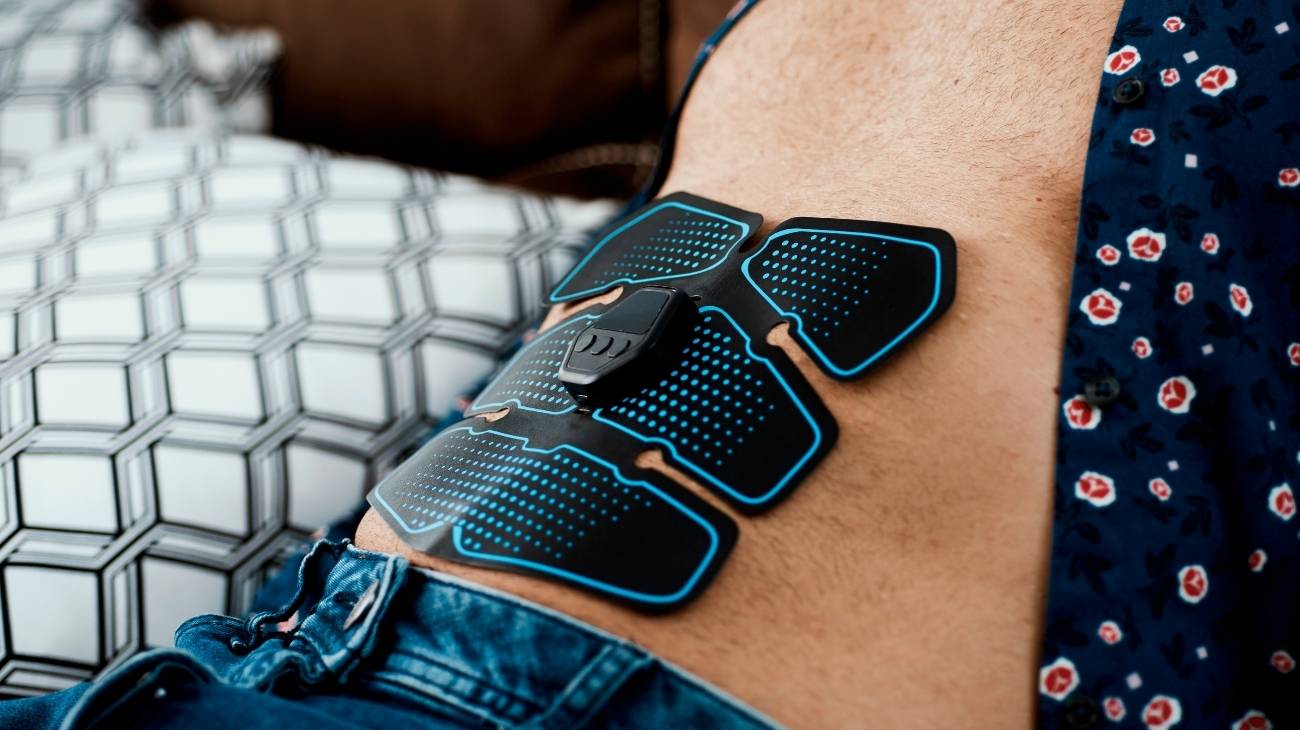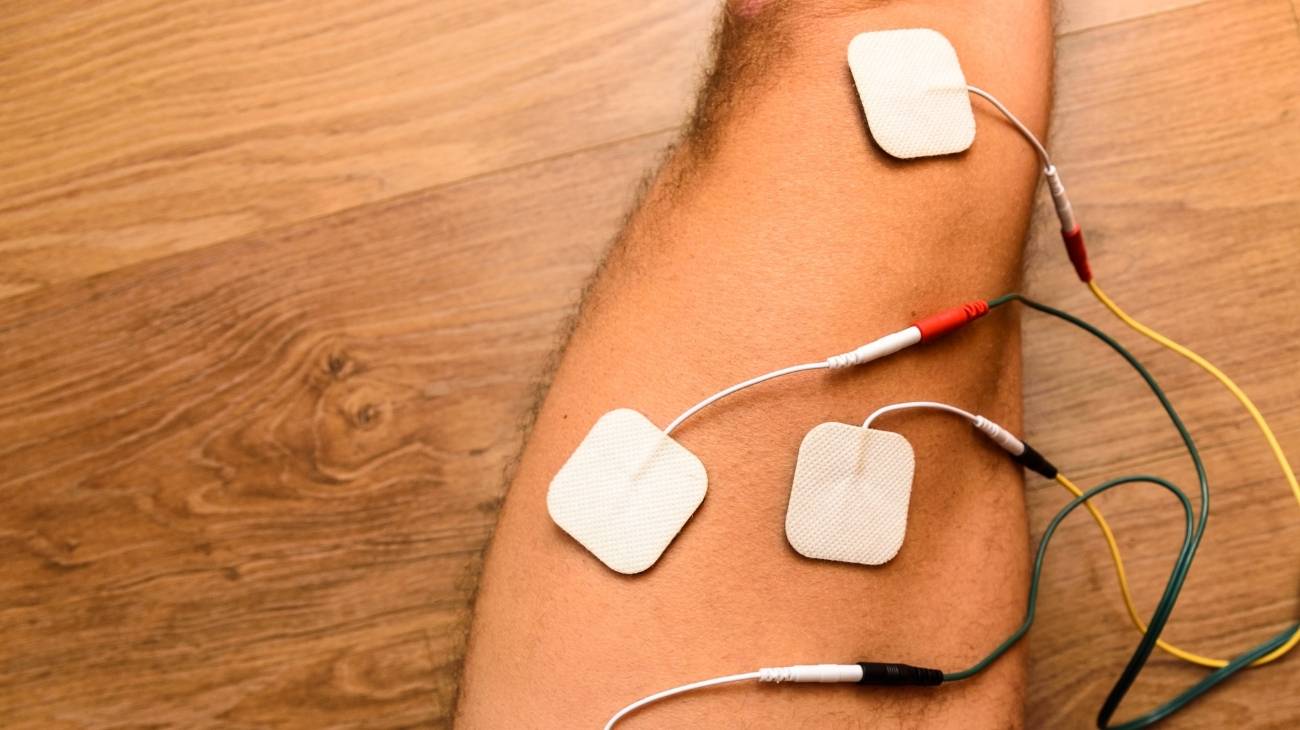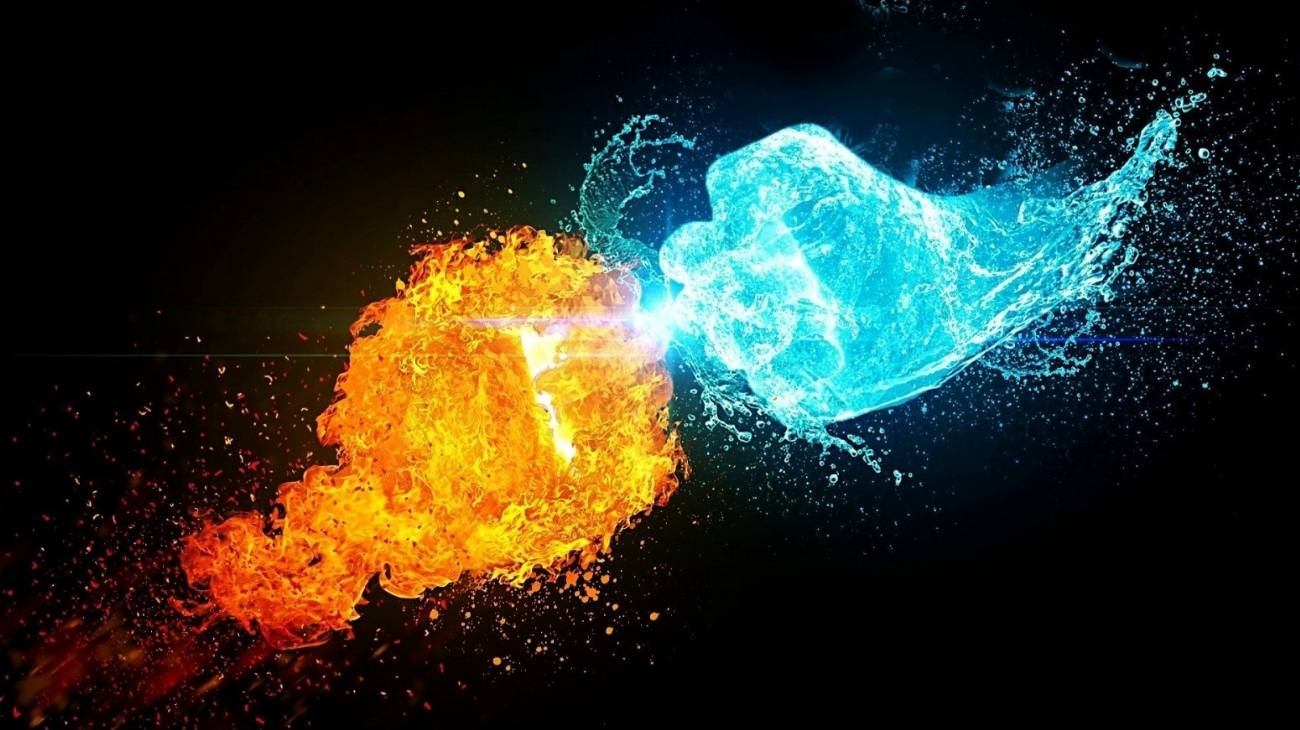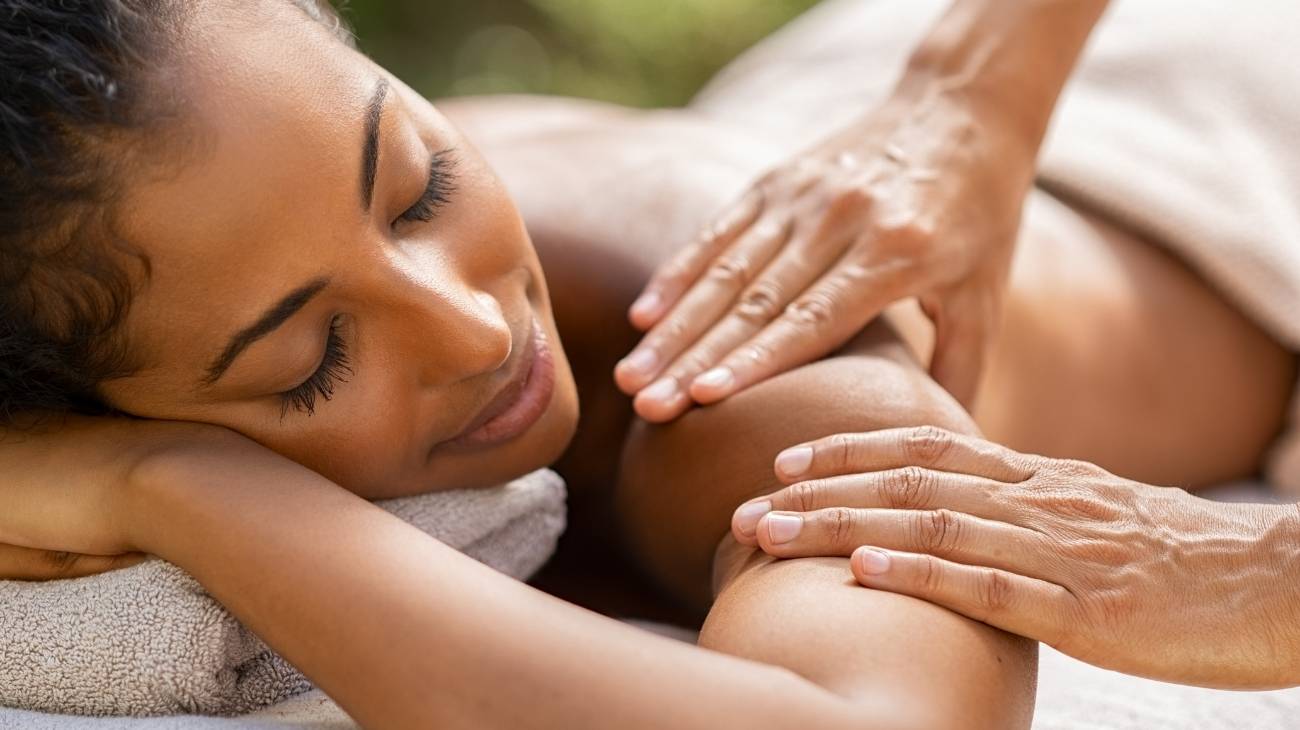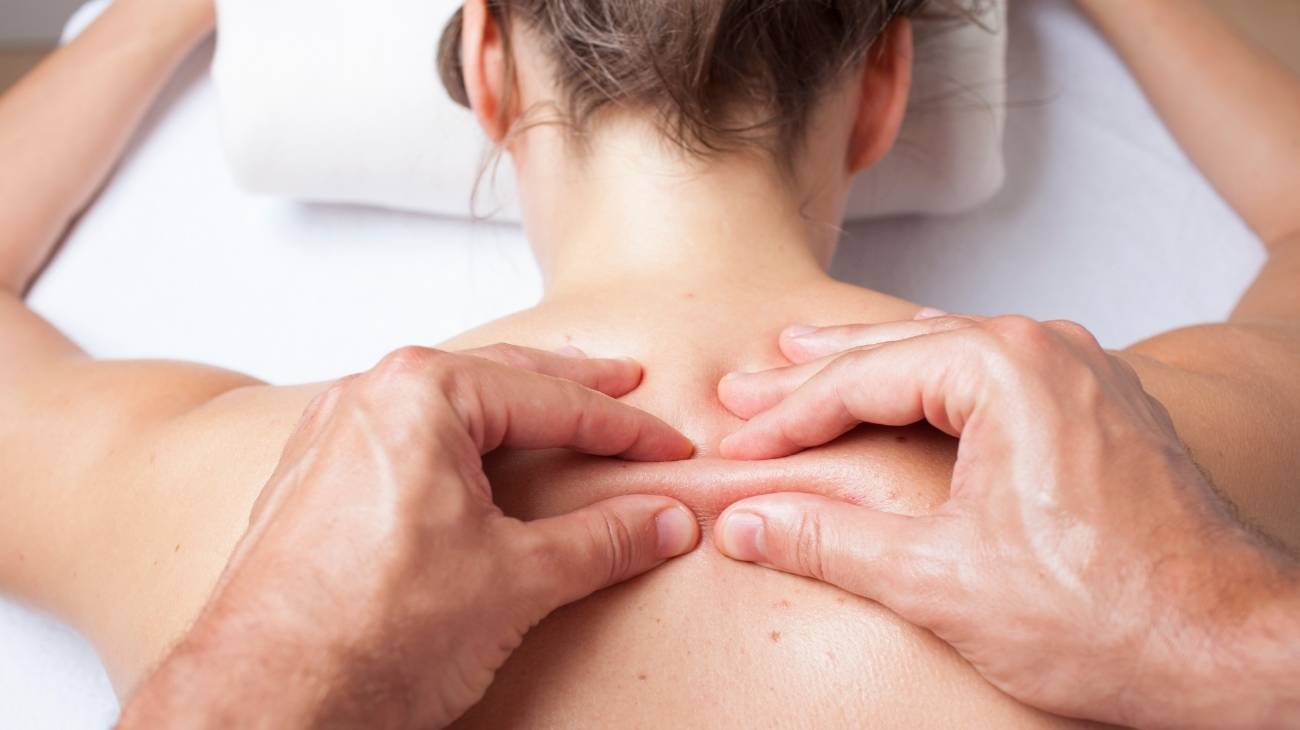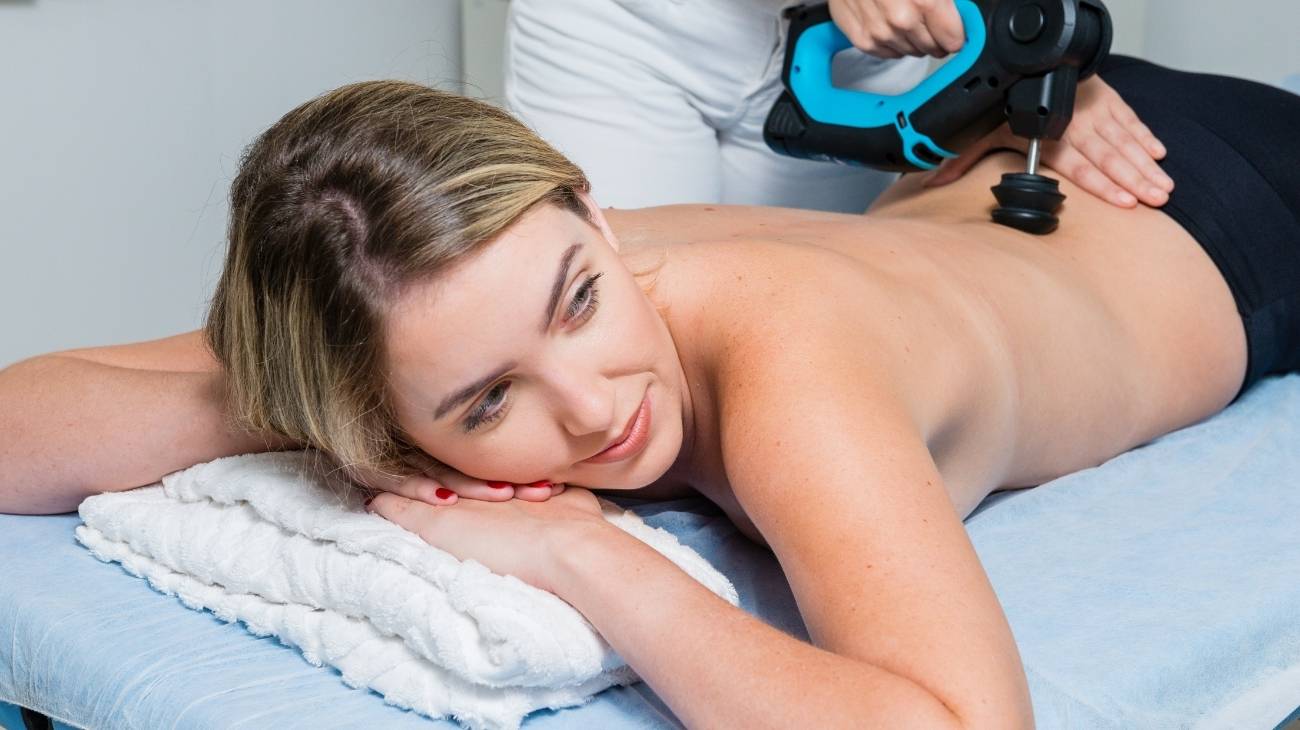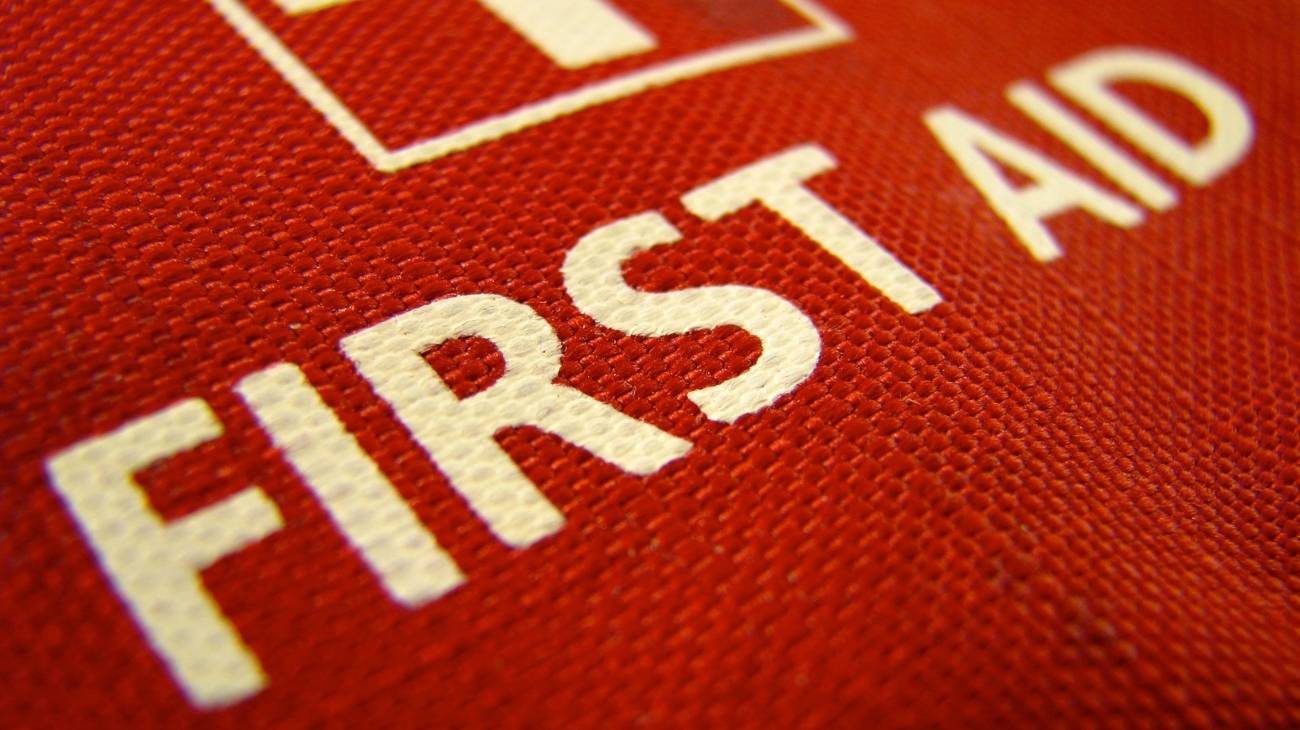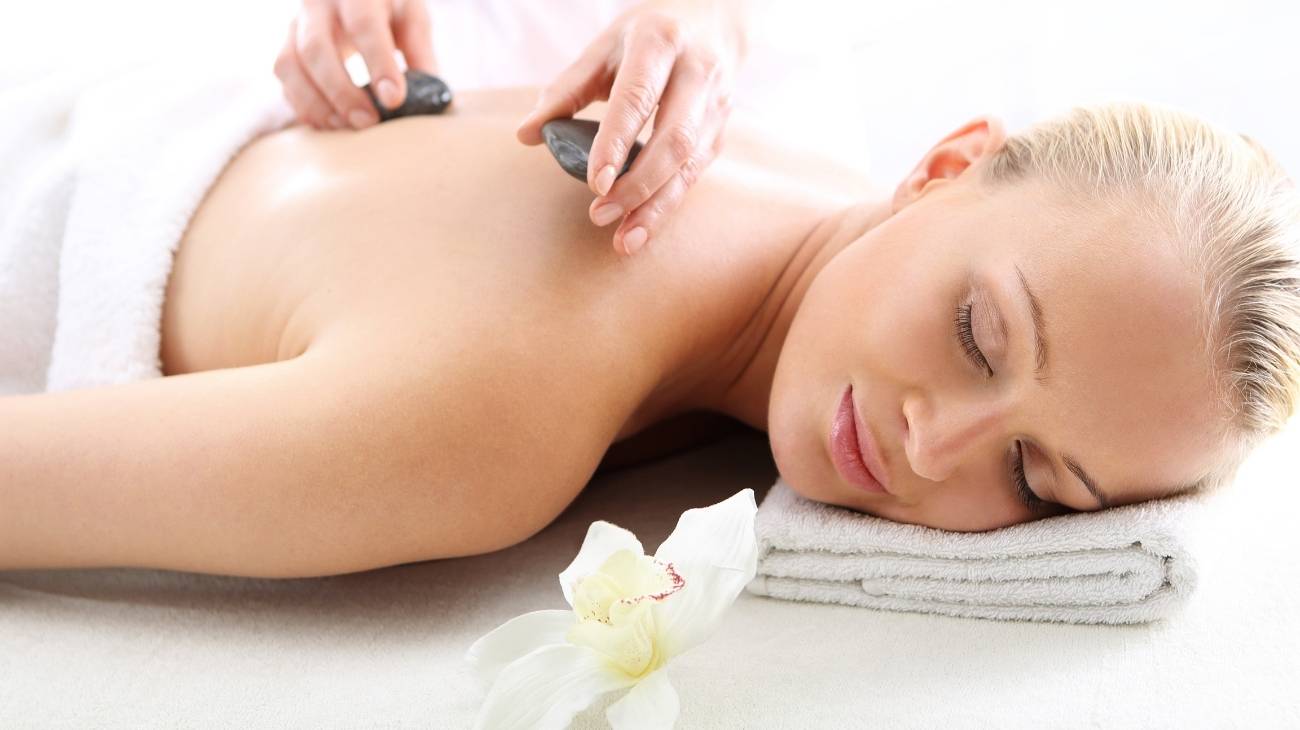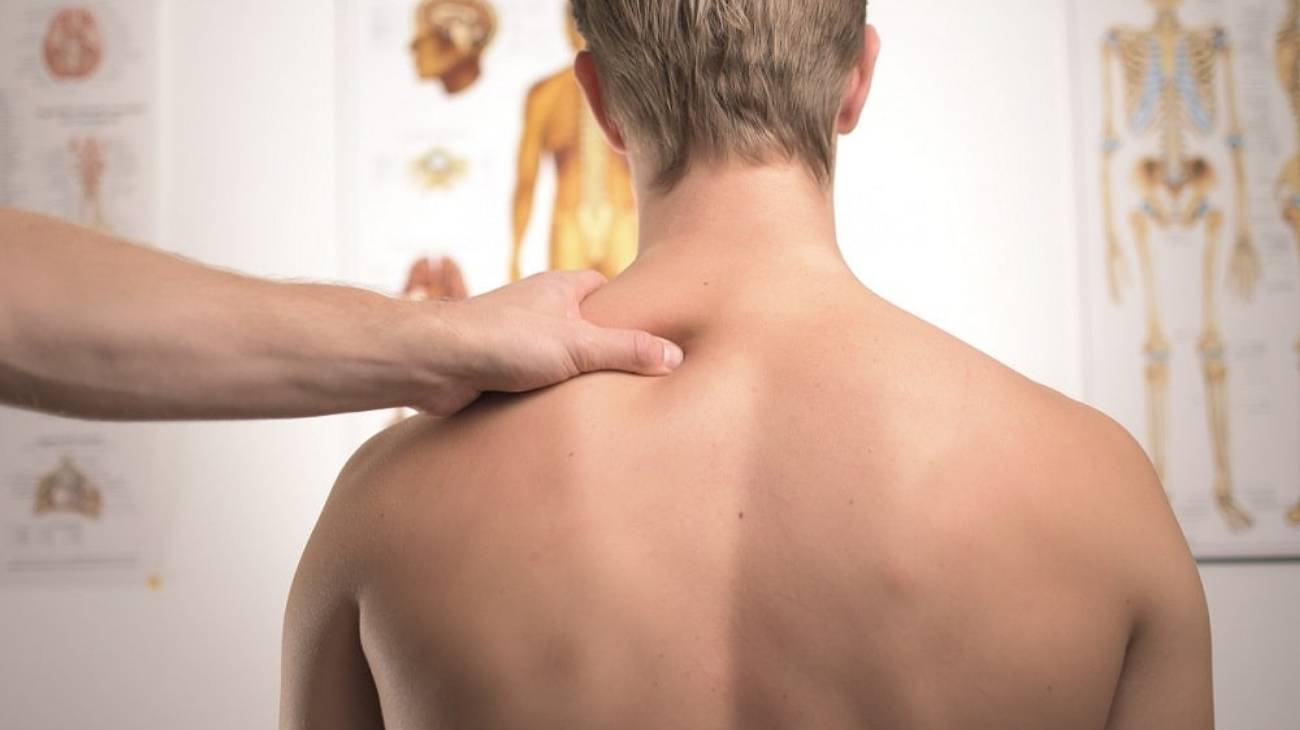- What is hot and cold therapy and what is it for?
- What are the benefits of using cold and heat therapy to reduce inflammation?
- When to apply hot or cold depending on the type of pain and injury?
- How are hot and cold therapies done correctly to recover and reduce inflammation?
- F.A.Q: Frequently Asked Questions
I'm sure you've heard of cryotherapy and thermotherapy, but... what about both together? This combo is known as hot and cold therapy and, although it is less used, the truth is that we find it in rehabilitation rooms both in hospitals and in physiotherapy centres.
Here we are going to discover what heat and cold application is, when each one should be given, how to place the pads and other elements to carry out this therapy and the rest of the steps that we must follow for this therapy to be successful.
What is hot and cold therapy and what is it for?
As we have already deduced, this is a resource based on the contrast of temperature to which we are exposed with different intentions. Generally, the objectives are related to the improvement of injuries, reduction of pain, with the prevention of mistreatment of an area or even it is being used as a method of relaxation or in cosmetics.
What we do is expose an area of our body (or, directly, all of it) to a "high" temperature, between 38 and 42 degrees (in water, much higher in steam) for a while and then do the same by exposing ourselves to very low graduations, which depend on the type of exposure we are subjected to, but which can even be below 0 degrees. This is repeated a certain number of times depending on the problem we are dealing with.
Apart from the contrast in the same session, there is also cold/hot therapy, which consists of applying one and the other at different times, depending on the moment in which our nervous and muscular systems, our injury, etc., are found. In this case the sessions are one with cold and the other with heat, there is no immediate contrast.
Bestseller
-
Gel Eye Mask for Puffy Eyes (Gold/Black)
£9,95 -
Microwavable Heated Slippers (Hearts)
£24,95 -
Microwavable Heated Slippers (Oxford)
£24,95 -
Microwavable Heated Slippers (Sport)
£24,95 -
Microwave Wheat Bag for Back Pain Relief (Extra Large) (Hearts)
£24,95 -
Microwave Wheat Bag for Neck & Shoulder Pain Relief (Hearts)
£24,95 -
Microwave Wheat Bag for Neck Pain Relief (Sport)
£20,95 -
Microwaveable Wheat Bag for Pain Relief (Oxford)
£20,95 -
Wheat Bag for Microwave Classic Bottle Shaped (Oxford)
£20,95
What are the benefits of using cold and heat therapy to reduce inflammation?
When we have an accident or do a bad physical activity, for example, we can suffer from inflammation. It can be caused by a sprain, by a blow, by applying too much weight. Sometimes we don't know whether to wear something hot or cold and it's certainly a bit confusing. However, having some simple concepts clear, there should be no problem.
In any case, it is important to know how heat and cold act on inflammations:
- Do not do contrast therapy: The first thing you should know is that, in this case, you do not resort to contrast therapies but that both heat and cold will be applied at very different times, leaving both to act as long as necessary to help in their work against inflammation.
- Cold: Cold is the best friend when it comes to reducing the inflammation of an injury. It slows down circulation and metabolic activity, reducing blood flow and preventing the area from increasing in size. It also numbs and soothes pain and achieves tissue modification. The result is a real feeling of relaxation, which leads to a lack of activity and therefore overexertion and swelling. Apply it with cold packs to adapt to the shape of the inflamed area or with sprays.
- Hot: Heat relieves pain long after an injury and is beneficial in many other circumstances. However, in relation to the swelling, which is the one that concerns us, it will be positive to apply it later, once the cold has had its effect, to return the muscles and nerves to normal as well as the blood flow itself. If this is not the case, there is a risk of numbness and difficulty in healing the area due to lack of use and that, due to misuse, the area will be affected again and inflate again.
When to apply hot or cold depending on the type of pain and injury?
As we have just said, although heat does not act as the main element in reducing the size of an area of the body affected by an injury, trauma, etc., it does have many other virtues, just like cold. Let's see when it's good to use one and the other, especially in the case of pain.
When to apply cold?
- Cold has positive effects when applied to our body (cryotherapy) and therefore when we can benefit from its application if we have any pain or have directly suffered an injury.
- Cold is anti-inflammatory. This happens because we slow down the blood flow by thinning the veins and, evidently, it lowers the body temperature, which has increased to defend itself, doubling its size.
- This makes the pain also reduced. But it does not only have immediate effects. It can even prevent damage to secondary tissue.
- It also acts on the nerves, which means that we feel some numbness (it will depend on your sensitivity to cold, the time of exposure, etc).
- It is the ideal resource to use in the first hours after the accident, injury or pain. More than 3 days later it is never advisable to use it except to try to diffuse the bruises.
The situations in which ice (or cold in general) is more suitable are:
- Blows.
- Sprains.
- Recent fractures.
- Dislocations.
- Strains.
- Tendonitis.
- Overloads and other overexertions of the muscle.
- Pain in focus in the upper area of the head or between the eyes.
- Iliotibial banding (pain on the side of the knee).
- Spasms.
- Headaches.
- Stress that causes physical symptoms.
- Sporadic pain.
If this is not the case, things like the following can occur:
- Uncontrolled numbness.
- Nerve atrophy.
- Hypothermia.
- Increased rigidity.
- Frostbite.
As contraindications we have:
- Diabetes.
- Hypersensitivity or allergy to cold.
- Vascular problems.
- Problems related to touch and perception.
- Appendicitis and other visceral problems.
- Serious cardiovascular pathologies.
When to apply hot?
The application of heat or thermotherapy is beneficial because, unlike cold, it promotes blood flow by thickening the capillaries. This causes the tissues to be reoxygenated and replenished with nutrients, gradually returning to normal (among other things, they become more elastic).
In general, we can say that the application of heat is more useful in all the cases we have not mentioned before. The first and most important is if more than three days have passed since the pain occurred.
Make use of heat therapy in the following cases:
- Muscle strains.
- Discomfort after over-exertion (remember that you should always have a few cold sessions during the first few days as this is indicated to reduce swelling, eliminate pain, help numb the area, etc).
- Arthritis and other common or chronic bone problems (not the result of an accident).
- Stiffness of the muscle without injury.
- Cramps and muscular contractures.
- Pain as an effect of taking medication.
- Diseases that produce pressure on the joints.
- Lack of sleep.
- Sensitivity.
- Fibromyalgia.
- Lack of temporary mobility.
- Lack of flexibility in ligaments.
- Anxiety.
- Pain due to menstruation.
- Soothing of inflammation (after days of cold therapy that reduce it considerably).
- General soothing.
You should not apply more heat than necessary to avoid effects such as:
- Increased inflammation.
- Burns and other wounds.
- Irritability.
- Dizziness.
- Sleepiness.
- Fevers.
- Pain.
Some contraindications of thermotherapy are:
- Bleeding (heat should not be applied to open wounds because it favours blood flow).
- Cardiopathies.
- Appendicitis.
- Taking anticoagulants.
- Problems in bony prominences.
When to apply cold/hot contrast?
Hot/cold contrast in the same session is sometimes quite particular and/or can also be treated with only one of the therapies. For this reason, it is best that this mixed therapy is always consulted with an expert.
The hot/cold baths or contrast baths have an anti-inflammatory effect, improve the metabolism, relax, focus attention and bring us back to normal.
These cases would be:
- Nutrition of the muscles: The heat will feed the muscle and the cold will remove the waste or dead cells, toxins, etc. This should be done several times, bringing the temperatures closer together, that is, making the cold dives at higher temperatures and the hot ones at lower ones, so that you end the session with not so contrasting dives that help the area to return to normal. It is ideal for recovery after periods of immobilisation
- Headaches or bad focus: Similarly, we have that the cold will reduce the pain, so you must apply it first to achieve the most necessary and evident action. Also, if your nerves are being affected and sending signals to the brain, this will stop happening. Next, heat should be applied to normalize the flow and temperature.
- Rheumatism: This is a clear example of a pathology that benefits equally from both practices since both treat pain and are not discouraged for any other reason. This can be extrapolated to any other problem we may have.
- Flexibility of capillaries: We work on vasodilatation and vasoconstriction, reinforcing the elasticity of the vessels and favouring blood flow.
- Cleaning of tissues: Oedemas are reduced, the lymphatic system works better and dead cells run through the bloodstream, which brings nutrients and oxygen,
- Sensitisation of the nervous system: We help the nervous system to return to normal, whether it has atrophied, for example, due to an accident, or whether it is we ourselves who, by getting cold, are continually making it work with greater and lesser difficulty.
On the other hand, we can consider alternating applications of heat and cold in the same day, always after 72 hours after the injury or accident, so that the cold has already done most of its work and the heat does not become counterproductive.
The essence is the same as we have explained with hot and cold baths: subjecting the body or the area to both contrasting situations so that it benefits from what the opposites have to offer. But, of course, this will be done, as we have said, after cryotherapy (which is the one applied first to lesions) and, of course, when one or the other is not advised against.
How are hot and cold therapies done correctly to recover and reduce inflammation?
As you can imagine, and although we've all done it at one time or another, getting hot or cold, let alone a combination of the two, is not something we can do lightly. The patterns, though similar, will differ from the reason we do it and also from the state we are in. These are not drugs but we must also be careful and make responsible use of cryotherapy and thermotherapy, even at home.
How to apply cold?
In general, consider the following when applying cold:
- Always try to use specific products for cryotherapy such as seed sacks, gel pads, coldpacks, cold compresses, etc.
- If you do not have these resources, use a bag of frozen peas (its small size will allow you to adapt the bag to the shape of your body).
- If you have to use ice, crush it and always have a layer, however thin it is, of fabric, plastic or other material that does not break with water between it and your skin.
- If you want to make short and consecutive applications, do not exceed 15 minutes and wait an hour to reapply provided that the area is not numb, numb or has some inconvenience typical of excessive cold.
- Another application guideline, which is the most recommended, is exposure for 20 or 25 minutes every 4 hours, spacing them out at 6 if you think you don't need it.
- Do not let the cold remain in one area for too long; apply it with gentle, slow massages. This way you avoid freezing and treat a larger area.
- But leave the area still, unless you're swimming or doing the prescribed exercises.
- Wash both the affected area and all the material you use.
- Dry yourself after application.
- Pool baths are ideal for reducing inflammation of the peripheral joints.
- Massages will be convenient in cases of superficial inflammation of excellent location.
How to apply heat?
In the case of heat, bear in mind the following points to practice thermotherapy without risk and with excellent results.
- Choose the resource to be used carefully; there are many: bags, blankets, sacks, cloths, compresses, vaporizers...
- Hot patches, for example, are ideal for spasms and to increase flexibility.
- You can spend more time exposed to heat. Of course, the higher the temperature, the shorter the exposure time.
- Similarly, there is no need to allow so much time to pass between one application and another. As long as you have time and the area you want to heat is not damaged by heat, do so.
- You can never exceed 58 degrees centigrade. It would be strange but, even if you can, don't do it, this is the point of sensitivity of the human dermis. Raising the temperature by 12 or 14 degrees should be enough.
- As with the cold, don't put the heat directly on your skin. If you use heating appliances, do not disregard their protection. For the most homely, a fine and clean cover will be enough.
- Do not apply heat after exercise.
- Never combine it with menthols.
How to apply hot/cold?
If you opt for alternative hot/cold sessions, consider the following:
- This is something that should be recommended and, of course, carried out by a professional.
- If there is both recent pain and injury, cold should always be applied first.
- If not, the usual thing to do is to start with the hot immersion.
- An expert should determine the immersion time as well as the temperature of each element. In general, the hot water will be at a maximum of 45 degrees and we will immerse ourselves between 3 and 6 minutes. The cold will be more variable, between 10 and 20 degrees and we will apply less time, up to 3 minutes maximum (if the immersion is full body we will not exceed 2 minutes). We must repeat diving in heat and cold at least three times in each one.
- It ends in cold if your injury is still hot, that is, it has been done very recently. Warming will be when it is longer or you are treating something chronic or recurrent or if you suffer from stiffness.
- Do the exercises that are considered within the buckets, during the dives.
F.A.Q: Frequently Asked Questions
References
- Cochrane, D. J. (2004). Alternating hot and cold water immersion for athlete recovery: a review. Physical therapy in sport, 5(1), 26-32. https://www.sciencedirect.com/science/article/abs/pii/S1466853X03001226
- Myrer, J. W., Measom, G., Durrant, E., & Fellingham, G. W. (1997). Cold-and hot-pack contrast therapy: subcutaneous and intramuscular temperature change. Journal of athletic training, 32(3), 238. https://www.ncbi.nlm.nih.gov/pmc/articles/PMC1320244/
- Cohn, B. T., Draeger, R. I., & Jackson, D. W. (1989). The effects of cold therapy in the postoperative management of pain in patients undergoing anterior cruciate ligament reconstruction. The American journal of sports medicine, 17(3), 344-349. https://journals.sagepub.com/doi/abs/10.1177/036354658901700306
- Samborski, W., Stratz, T., Sobieska, M., Mennet, P., Müller, W., & Schulte-Mönting, J. (1992). Intraindividual comparison of whole body cold therapy and warm treatment with hot packs in generalized tendomyopathy. Zeitschrift fur Rheumatologie, 51(1), 25-30. https://europepmc.org/article/med/1574933
- Saeki, Y. (2002). Effect of local application of cold or heat for relief of pricking pain. Nursing & health sciences, 4(3), 97-105. https://onlinelibrary.wiley.com/doi/abs/10.1046/j.1442-2018.2002.00112.x
- French, S. D., Cameron, M., Walker, B. F., Reggars, J. W., & Esterman, A. J. (2006). A Cochrane review of superficial heat or cold for low back pain. Spine, 31(9), 998-1006. https://journals.lww.com/spinejournal/Abstract/2006/04200/A_Cochrane_Review_of_Superficial_Heat_or_Cold_for.8.aspx
- French, S. D., Cameron, M., Walker, B. F., Reggars, J. W., & Esterman, A. J. (2006). Superficial heat or cold for low back pain. Cochrane Database of Systematic Reviews, (1). https://www.cochranelibrary.com/cdsr/doi/10.1002/14651858.CD004750.pub2/abstract
- Roiser, J. P., & Sahakian, B. J. (2013). Hot and cold cognition in depression. CNS spectrums, 18(3), 139-149. https://www.cambridge.org/core/journals/cns-spectrums/article/abs/hot-and-cold-cognition-indepression/9AB200FFF1C4DF3EF8FC5D314070A643
- Arora, S., Vatsa, M., & Dadhwal, V. (2008). A comparison of cabbage leaves vs. hot and cold compresses in the treatment of breast engorgement. Indian journal of community medicine: official publication of Indian Association of Preventive & Social Medicine, 33(3), 160. https://www.ncbi.nlm.nih.gov/pmc/articles/PMC2763679/
- Armstrong, L. E., Epstein, Y., Greenleaf, J. E., Haymes, E. M., Hubbard, R. W., Roberts, W. O., & Thompson, P. D. (1996). American College of Sports Medicine position stand. Heat and cold illnesses during distance running. Medicine and Science in Sports and Exercise, 28(12), i-x. https://europepmc.org/article/med/8970149

